I have this code in my table view controller (and delegate):
- (void)tableView:(UITableView *)tableView didSelectRowAtIndexPath:(NSIndexPath *)indexPath {
DetailStatus *detailViewController = [[DetailStatus alloc] initWithNibName:@"DetailStatus" bundle:nil status:[mStatuses objectAtIndex:indexPath.row]];
[[self navigationController] pushViewController:detailViewController animated:YES];
[detailViewController release];
[self.tableView deselectRowAtIndexPath:indexPath animated:NO];
NSLog(@"exiting didselectrow");
}
And in my DetailStatus class:
- (id)initWithNibName:(NSString *)nibNameOrNil bundle:(NSBundle *)nibBundleOrNil status:(NSDictionary *)pStatus {
NSLog(@"I am being called %d", [pStatus objectForKey:@"id"]);
self = [super initWithNibName:nibNameOrNil bundle:nibBundleOrNil];
if (self) {
// some stuff
}
return self;
}
The funny thing is, my DetailStatus is actually being initialised, in the console window, it even outputs "I am being called 000001" but strangely the view is not being pushed to the table view...
I've checked the nib name, and it's ok. I checked the DetailStatus heading file, it looks ok (like this):
@interface DetailStatus : UIViewController {
So does anyone know why the view is not being pushed to the window even if I've initialised it and pushed it?
UPDATE: I tried logging some debugging messages to viewDidLoad in DetailStatus, and it seems like the view is not loaded even though the class was instantiated... I wonder why.
UPDATE2: I have a feeling that this might be my navigation controller organisation that's wrong.. I have this following:
Login page -> customtabbar -> First table view -> DetailStatus
-> Second table view -> DetailStatus
I think I'm only maintaining one navigation controller in that hierarchy. I've never created other navigation controllers. I only push view after another.
Thank you everyone for the answers! I will give out the bounty soon, I'll let other people vote first before the bounty expires.
